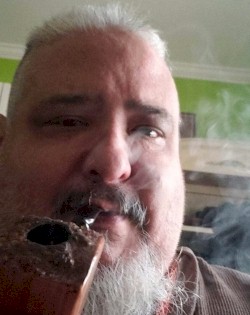Faculty Directory

- Affiliate Faculty
To provide clients in the scientific/engineering sector with various support services ranging from theoretical modeling to mathematical analysis of data. Founded in Atlanta, GA , USA in OCT 1990.
Since 1990 I have been working as a CONSULTANT in various areas of Theoretical Physics [e.g., Quantal/Classical Dynamics, Wave propagation in variable media, Electromagnetics, Navier-Stokes systems, Electronics, Neural modeling, Signal Analysis, CyberDefense, Econophysics, etc.], as well as various related areas of Mathematical Physics [e.g., Heaviside operators, Analytical solutions, Differential equations, Mathematical methods in physics and chemistry, Quantum mechanics, Quantum phase space, Dynamics, Solitons].
Among other Synergistic Services, I am also an Invited Panel Reviewer for Mathematical Reviews/MathSciNet, Journal of Mathematical Chemistry, Annals of Physics and Continuum Mechanics and Thermodynamics as well as a Research Adjunct Professor of Physics at Western Kentucky University.
Mathematical Consultant Services
311 Center Street
Greenville, KY 42345 USA
E-mail: mcs007@muhlon.com
Development of Novel Exact Analytical solutions of Generalized Hamiltonian/Lagrangian Dynamical Systems in the Quantum Phase Space Representation and Classical Connections; also the exact analytical solutions of the attendant functional differential/difference equations.
Novel Analytical Methodology for Quantum Phase Space Wavefunction Engineering Technical Motivation, Objective and Scope:
The objective of this research is to utilize the novel solution scheme HOA (Heaviside Operational Ansatz) as the cornerstone for proposed novel exact analytical wavefunction engineering capabilities for quantum systems. The PI previously developed HOA for quantum dynamical wave equations [refs. 1-10]. These equations are central to quantum dynamics in toto: thus to basic and applied quantum studies in the QPSR (Quantum Phase Space Representation) [refs. 11- 13]. HOA was invented and became previously published [2004 - current] by the PI [e.g., refs. 2-10], to expressly yield such exact analytical wave functions. Since all the information of any quantum system is encoded into it's wavefunction (i.e., the system state function), it follows by necessity that the PI's methodology summarily will provide enhanced theoretical and formal mathematical insight into the quantal dynamics of the applications being addressed. Thus this proposal seeks funding to advance the nascent HOA method to the next level: the engineering design, control and analysis of wavefunctions in various quantum nano chemical and information-theoretic dynamical systems [ref. 14]. Particularly, this project will utilize the HOA to further elucidate such systems in the Continuous Variable Regime, as well as control of various related (un)bounded dissipative quantum systems. Among other aspects, these will be studied via the use of HOA to solve temporal boundary value control problems for the system wavefunction in the QPSR, aswell as complex frequency domain phase space analysis of the system (e.g., the initial to final value quantum wavefunction control problem with quantum black box transfer functions generated by hybrid unitary/non-unitary evolution operators in QPSR (i.e., dissipative quantum phase space filters)) [refs. 15-20]. Some of the application foci to be studied in this project will include: (de)coherence of entangled systems in Quantum Information Systems and Quantum Optics [ref. 15] [e.g., multi- partite systems in driven/noisy environments; Quantum Circuits; etc.]; control of dissipative quantum systems [e.g., (un)bounded systems in external fields; chemical reaction dynamics in media as a computational platform] [ref. 19]. As noted above, a primary thrust of HOA-based engineering is analytical solution of temporal boundary value control problems for the system wavefunction in the QPSR, with complex frequency domain phase space analysis of the system transfer functions [refs. 16-20]. In this section, such processes will be sketched for coupled harmonic oscillators with time- dependent strengths, via Mathematica implementation. These are being found useful to study (de)coherence in dissipative quantum systems and self-contained quantum harmonic engines [refs. 21, 22]. The HOA solution formulae implemented via Mathematica, will provide the basis for powerful new 'solver engines' in this and related investigations. This project will therefore augment the knowledge base in Quantum Wavefunction Engineering.
- Torres-Vega, G. & Frederick, J. H. (1993),‘A quantum-mechanical representation in phase space’, Journal of Chemical Physics, 98(4),3103-3120.
- Simpao, V. A. (2004), Electronic Journal of Theoretical Physics, 1, 10-16.
- Simpao, V. A. (2006), Electronic Journal of Theoretical Physics, 3, No. 10, 239-247
- Simpao, V. A. (2008). ‘Toward Chemical Applications of Heaviside Operational Ansatz: Exact Solution of Radial Schrodinger Equation for Nonrelativistic N-particle System with Pairwise 1/rij Radial Potential in Quantum Phase Space’, Journal of Mathematical Chemistry, 2009;45(1):129-140
- Simpao, V. A., Chapter 6 , Mathematical Chemistry, NovaScience Publishers 2010 cross-published in International Journal of Theoretical Physics Group Theory and NonLinear Optics. Vol 14, Issue 2 Nova Science
- Simpao, V. A., ‘In Situ Remarks on Novel Exact Solutions of Quantum Dynamical Systems: Heaviside Operational Ansatz in the Quantum Phase Space Representation at the Generalised Hamiltonian-Lagrangian Nexus’, [Invited Book Chapter in ‘Focus on Quantum Mechanics” Nova Science Publishers, Inc. 2011 www.novapublishers.com.
- Simpao, V. A., ‘Recent Advances in Exact Analytical Wavefunction Methodologies’, [Invited monograph chapter in Theoretical Physics: Gravity, Magnetic Fields and Wave Functions Nova Publishing 2011]
- Simpao, V.A., (2012) Journal of Mathematical Chemistry Volume 50, Issue 7 , pp. 1931-1972
- Simpao, V.A., J. Math. Chem. 52(4), 1137-1155 (2014))
- de Gossen, Maurice. & Luef, F. (2008). Lett Math Phys, 85, 173-183.
- de Gosson, Maurice. et al , ‘Quantum mechanics in phase space: the Schrödinger and the Moyal representations‘, Journal of Pseudo-Differential Operators and Applications December 2012, Volume 3, Issue 4, pp. 367-398]
- Cosmos. Zachos, David B. Fairlie, & Thomas L. (2005). Curtright, Quantum Mechanics in Phase Space, (World Scientific, Singapore)
- Roman F. Nalewajski,, “Entropy/information descriptors of the chemical bond revisited”, Journal of Mathematical Chemistry, 2011; Volume 49, Number 10, 2308-2329.
- Werner Vogel and Dirk-Gunnar Welsch , Quantum Optics, Third, revised and extended edition. Copyright © 2006 WILEY-VCH Verlag GmbH & Co. KGaA, Weinheim, ISBN: 3-527-40507-0
- S.B. Oh, J. C. Petruccelli, L. Tian, and G. Barbastathis, ‘Wigner functions defined with Laplace transform kernels ‘, 24 October 2011 / Vol. 19, No. 22 / OPTICS EXPRESS
- S. Koda, ‘Initial-value semiclassical propagators for the Wigner phase space representation: Formulation based on the interpretation of the Moyal equation as a Schrödinger equation’, Journal of Chemical Physics 143, 244110 (2016); https://doi.org/10.1063/1.4938235
- R Chakrabarti, Quantum Control for Scientists and Engineers - PMC Advanced ...www.pmc-at.com/pdfs/QC_book.pdf
- S. Gräfe, J. Doose, J. Burgdörfer, "Quantum phase space analysis of electronic dynamics in intense few-cycle laser fields", J. Phys. B, 2012, 45, 055002-1 - 055002-15.
- Prof. Alberto Bemporad ,‘Frequency domain analysis’, University of Trentohttps://studylib.net/doc/18036461/frequency-domain-analysis---università-degli-studi-di-pal...#
- B. Reid, S. Pigeon, M. Antezza, and G. De Chiara, ‘A self-contained quantum harmonic engine’, arXiv:1708.07435v1 [quant-ph] 24 Aug 2017
- Yair Rezek and Ronnie Kosloff, ‘Irreversible performance of a quantum harmonic heat engine’, New Journal of Physics 8 (2006) 83 (http://www.njp.org/)
A community of faculty, staff, and students engaged in better understanding the physical world.
Some of the links on this page may require additional software to view.


